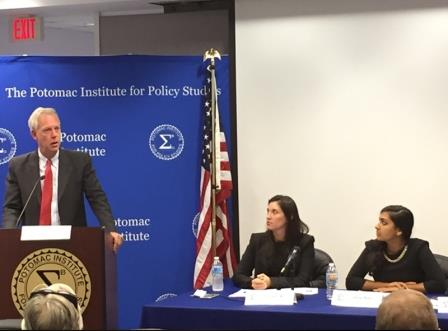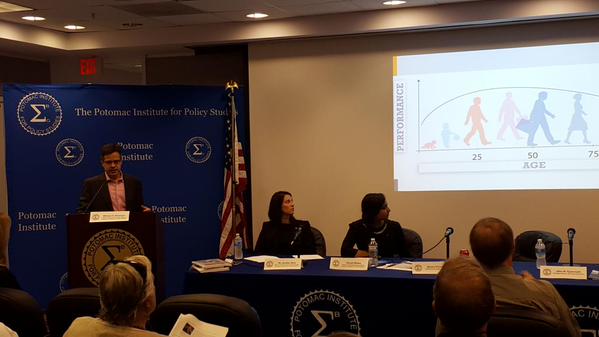The Neurotechnology Revolution: “The future is here; it’s just not evenly distributed yet”
.
On Tuesday, September 29th, 2015, the Potomac Institute for Policy Studies hosted a seminar in collaboration with SharpBrains titled, “The Neurotechnology Revolution: Market Trends & Impacts”. The seminar sought to initiate a discussion of the growing trends in funding and market development based on two recently released reports on emerging neurotechnology by Potomac Institute and SharpBrains.
Dr. Jennifer Buss, Director of the Potomac Institute’s Center for Neurotechnology Studies provided opening remarks for the seminar and introduced the Potomac Institute’s Trends in Neurotechnology Report. Unnati Mehta, the author of the report, presented some of the key components of this report to the audience. The report focused on the recent acceleration in neuroscience research publications and technology development. Neurotechnology can be used to further understand the natural processes of the brain, study and treat neurological disorders and injuries, and enhance neural capabilities, resulting in increased human intelligence and efficiency. Outside of the realm of health, it will be used in social contexts to improve overall quality of life. Brain Computer Interfaces (BCIs), imaging capabilities, cognitive load and wearable technologies have all improved rapidly and are being applied in multiple fields.
Alvaro Fernandez, CEO & Co-founder of SharpBrains, provided remarks to summarize and highlight some of the most important findings from SharpBrains’ Pervasive Neurotechnology report. The report is a comprehensive analysis of more than 10,000 patent filings that are transforming medicine, health, entertainment, and business. He delved into the key trends and insights that define pervasive neurotechnology developments, from exponential intellectual property growth and technology acquisition from large companies to the use of neuro-monitoring technologies and sensors in many social applications.
 John Cammack, Managing Partner of Cammack Associates, spoke about his observations of significant growth in our understanding of the brain’s functionality in complex areas like consciousness, awareness, attention, and memory. Because of these exciting, groundbreaking findings in the field of neuroscience, entrepreneurs and innovators are looking to translate this research into a market for enhancing human capabilities and brain fitness. These technologies will help us to improve outcomes for sufferers of mental illness and neurodegenerative diseases and disorders, but they will also provide normative datasets for use in large-scale research applications.
John Cammack, Managing Partner of Cammack Associates, spoke about his observations of significant growth in our understanding of the brain’s functionality in complex areas like consciousness, awareness, attention, and memory. Because of these exciting, groundbreaking findings in the field of neuroscience, entrepreneurs and innovators are looking to translate this research into a market for enhancing human capabilities and brain fitness. These technologies will help us to improve outcomes for sufferers of mental illness and neurodegenerative diseases and disorders, but they will also provide normative datasets for use in large-scale research applications.
A panel discussion following the speakers’ remarks involved the topics of neurotechnology personalization, the indicators that neurotechnology investment is here to stay, the impacts of neurotechnology on society, and policy recommendations on advancing neurotechnology. The neurotechnologies and their future iterations discussed during the panel will provide improved communication and make society more productive. Along these lines, there are many opportunities to apply the available science to government policy decisions in many areas. Additionally, these growing technology trends should be incorporated into policy ideas for the successful development and implementation of neurotechnology, such as the President’s BRAIN Initiative, so that we can make the most of the tremendous potential that neurotechnology offers.
To watch full event recording (90 minutes):



